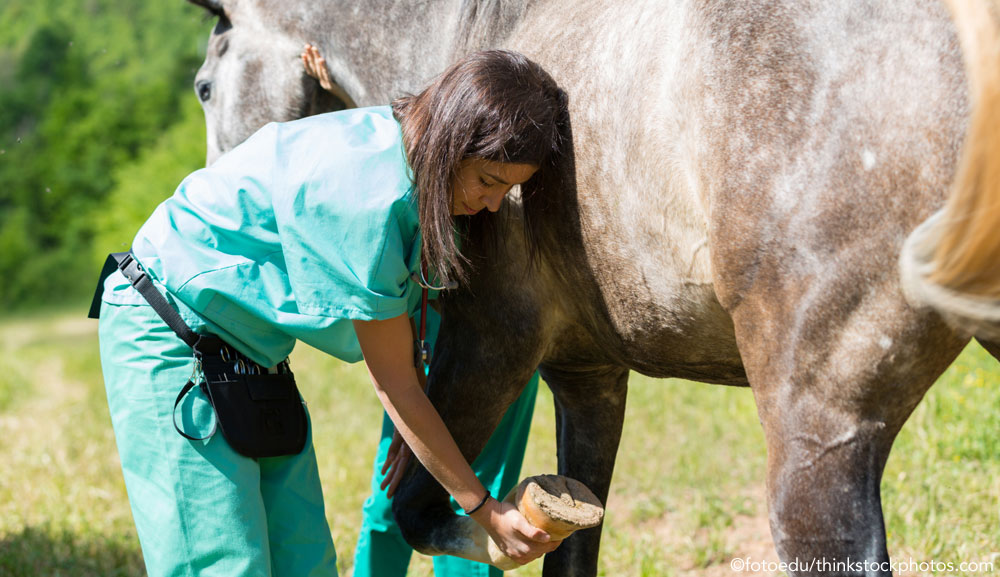Vet Q&A: Pre-Purchase Exam
Learn more on what a pre-purchase exam for a horse is!
Q: How can you tell if a horse is healthy before you buy it?

A: When a buyer is considering purchasing a new horse, often the veterinarian is called out to perform a pre-purchase examination (PPE). The goal of the exam is to detect any possible lameness or health problems before the sale goes through.


The vet will check vital signs, eyes, and teeth for any abnormalities. She will feel all four legs, looking for lumps, swelling or any other signs of a problem. The feet are evaluated for soreness with a special instrument called a hoof tester. The vet will also look at how the horse is built, including conformation of feet, legs and body.
After the initial exam is completed, the horse is walked and trotted in a straight line, then longed in a circle while walking, trotting and cantering. The veterinarian will usually do flexion tests of all four legs to check for underlying problems. Each leg is flexed and held for 60 to 90 seconds before the horse is trotted off with the vet watching closely. These tests have to be interpreted carefully, which is best left to experienced vets.
Finally, the horse is evaluated under saddle with a rider. Depending on the intended use of the horse, the veterinarian may watch the horse jump, do dressage, run barrels or simply move around the arena.
No horse is perfect, and often some problems will be detected during the exam. It is the veterinarian’s job to discuss the significance of these findings with the buyer, and it is the buyer’s job to decide whether or not they are OK with any possible risks detected. Remember, not all problems can be diagnosed during the pre-purchase exam, and there is always some level of medical risk involved when buying a horse.
Make sure you get along with the horse and that you feel safe riding him. A PPE, along with the help of your trainer, will help determine if the horse is the right one for you.
This article originally appeared in the September/October 2017 issue of Young Rider magazine. Click here to subscribe!
Recent Posts
How We Speak to Animals
Emotions play a crucial role in social species, helping regulate interactions. In animals, emotions can be assessed based on physiological,…
Therapy Horses: Equine Miracle Workers
Without therapy horses, there would be no equine-assisted activities for helping humans. They’ve been referred to as “angels with four…
How the Vet Direct Safety Net Program is Helping Horse Owners
Through the Vet Direct Safety Net Program, a Kentucky horse lover helped her veterinarian get funds to help during her…
Santa Anita Park Officially Announced as LA28 Olympics Equestrian Venue
After a long wait, accompanied by much speculation and a final dramatic turn, the official equestrian sports venue for the…
ASPCA Right Horse Adoptable Horse of the Week: Camp Hope
Welcome to Horse Illustrated’s weekly installment of the Right Horse Adoptable Horse of the Week, offered in partnership with the…
2025 FEI Basel World Cup Finals Hands Reins to Fort Worth 2026
As U.S. athletes look back on valuable experience gained at the 2025 FEI World Cup Finals in Switzerland, the next…